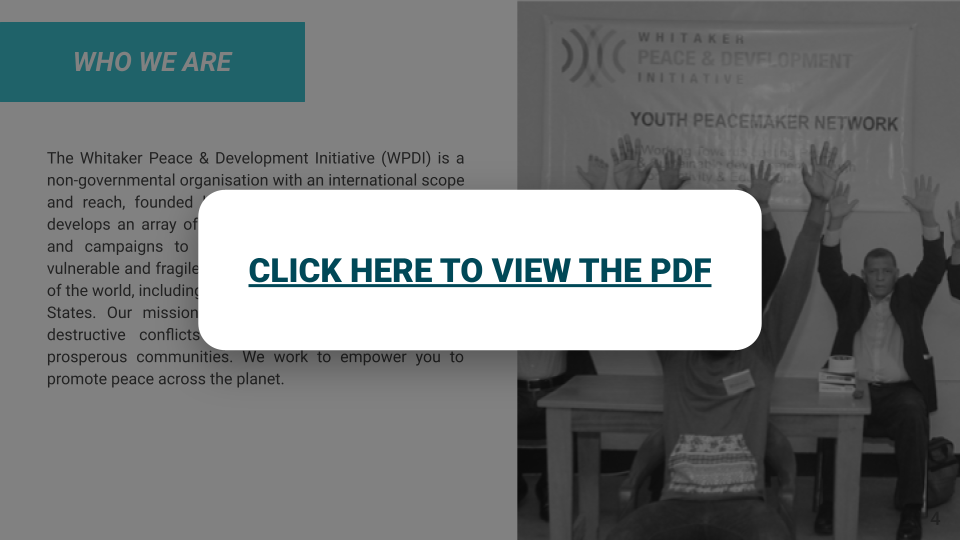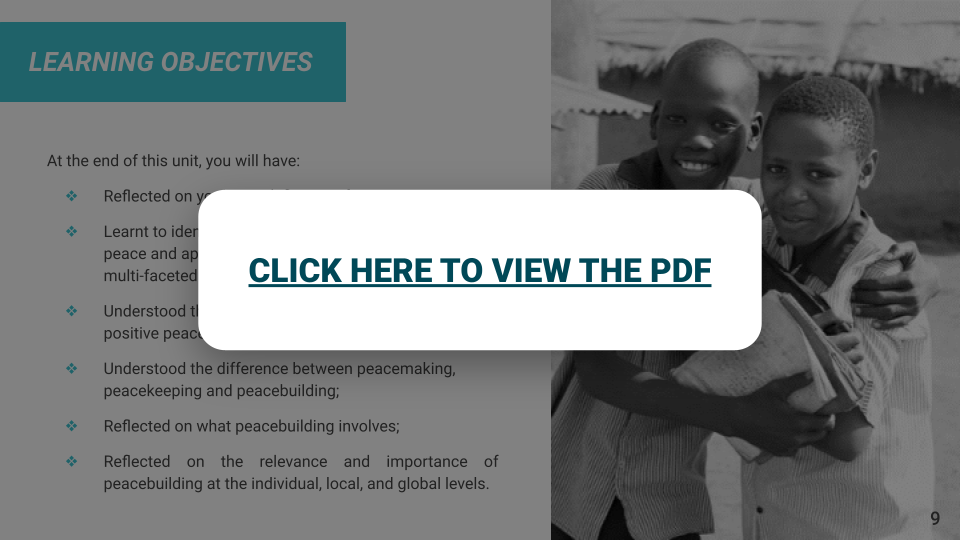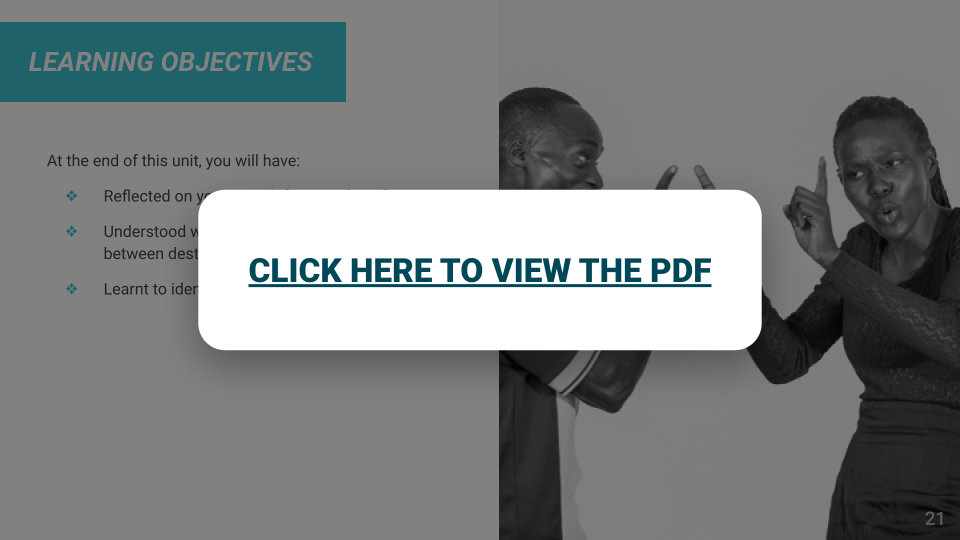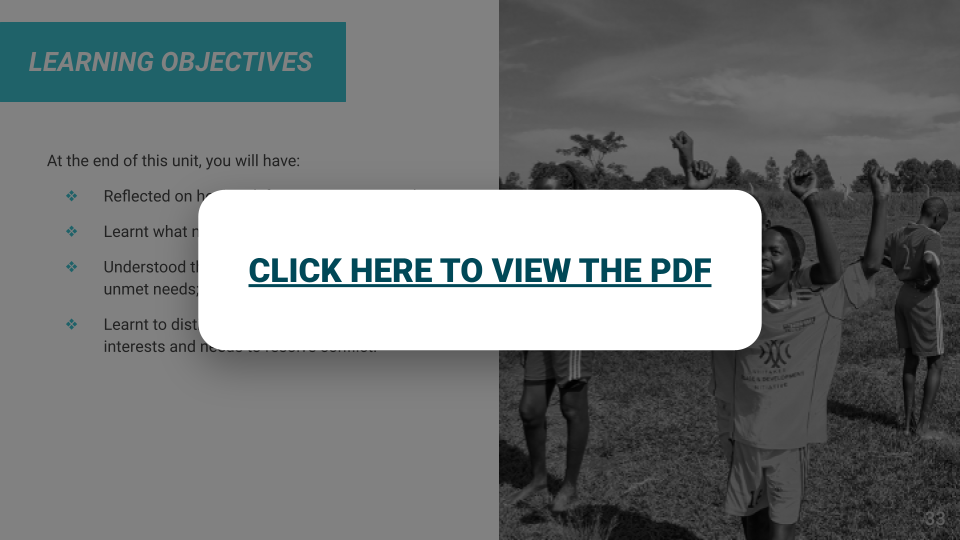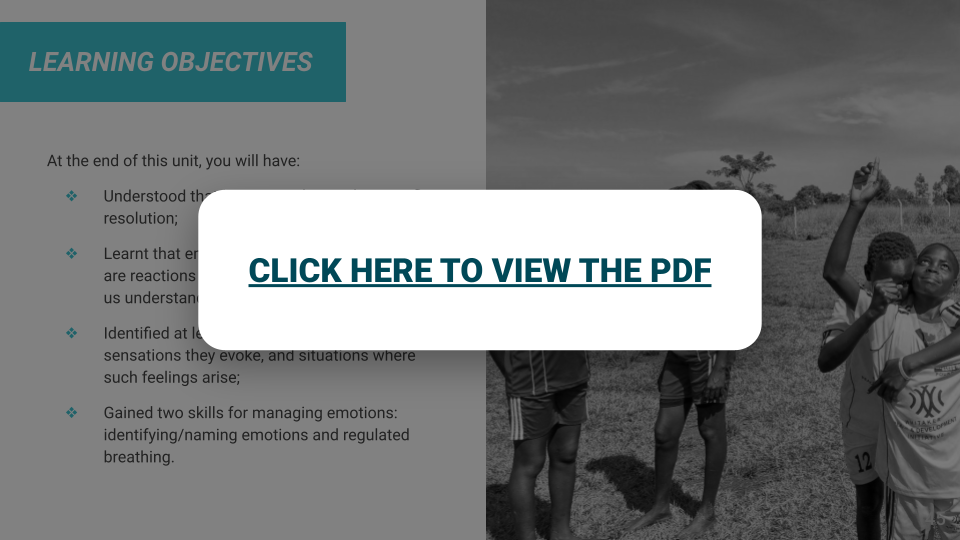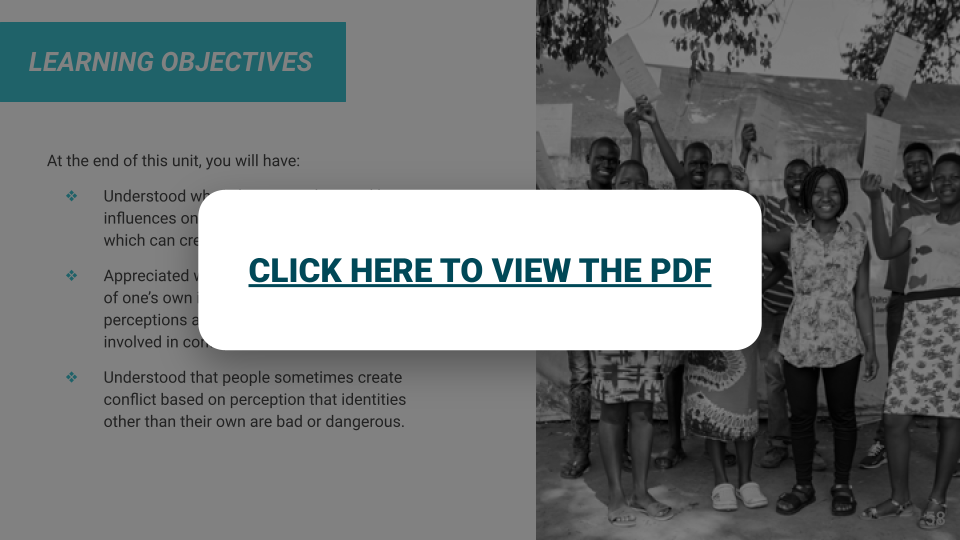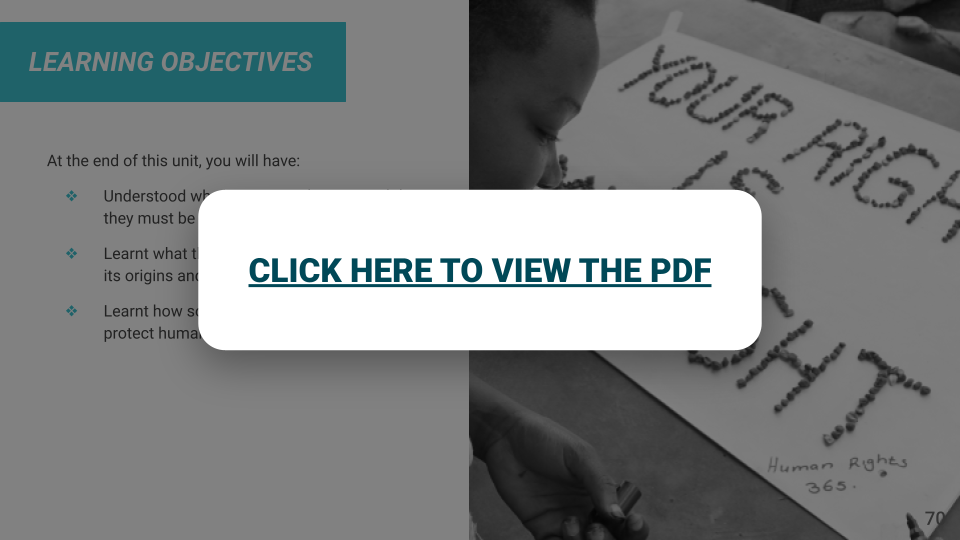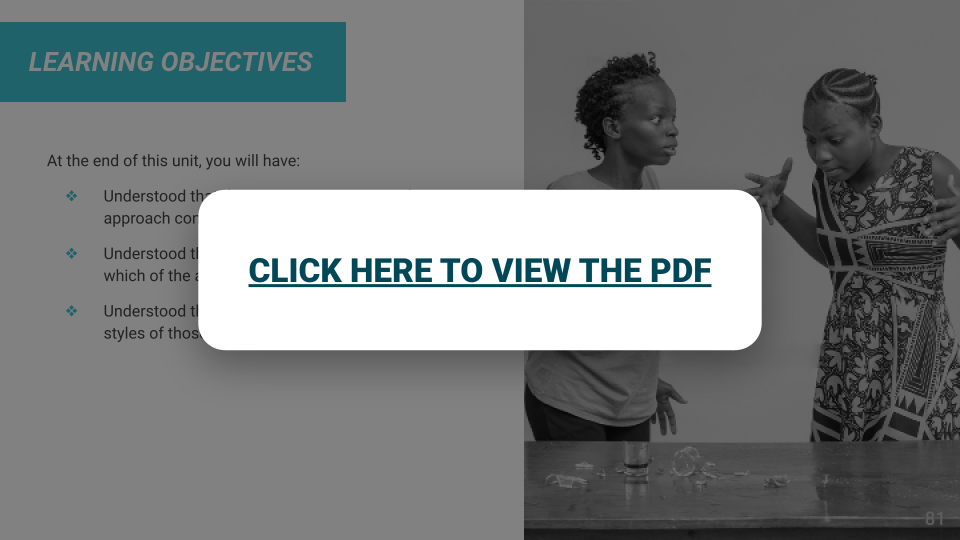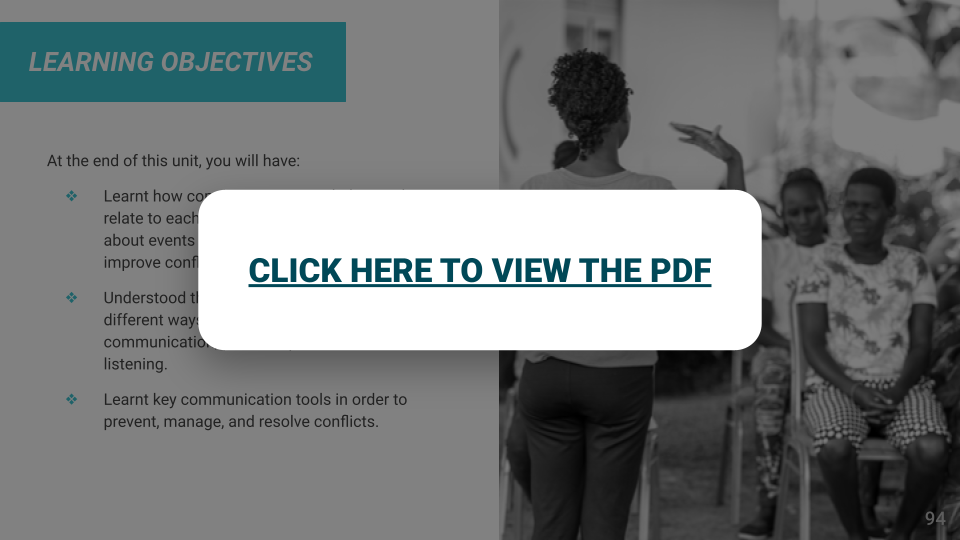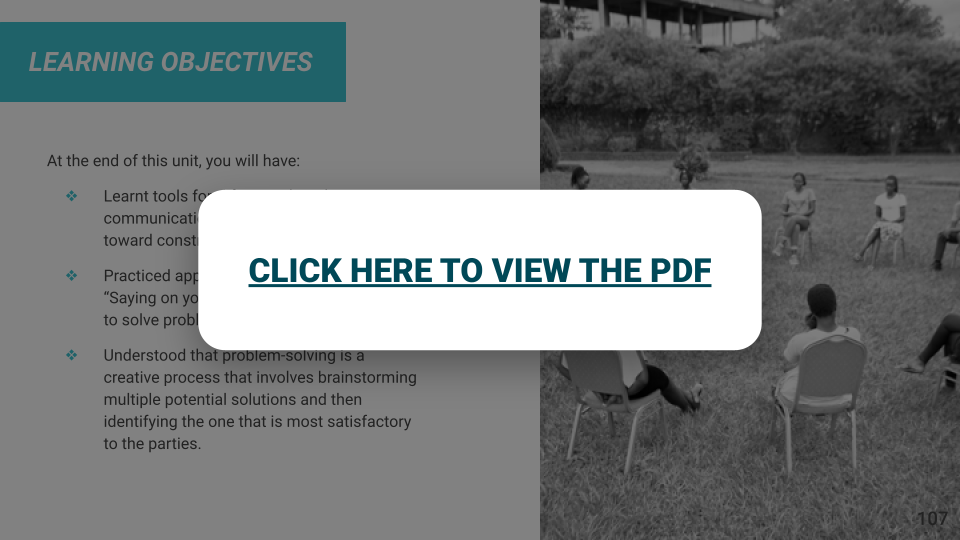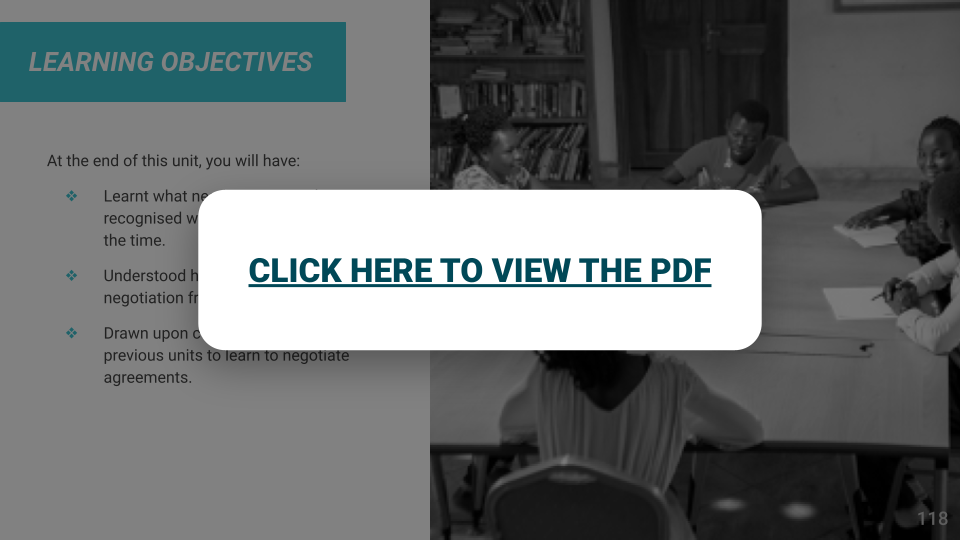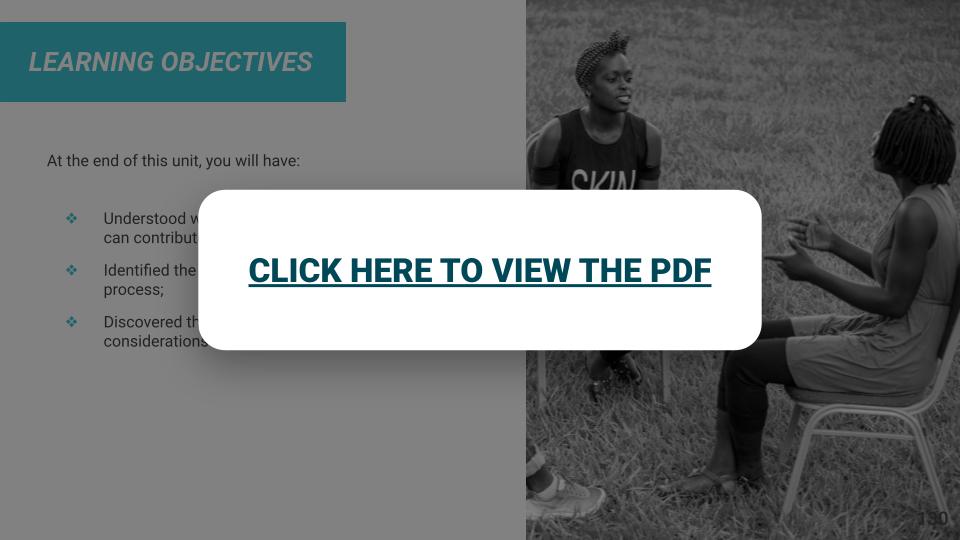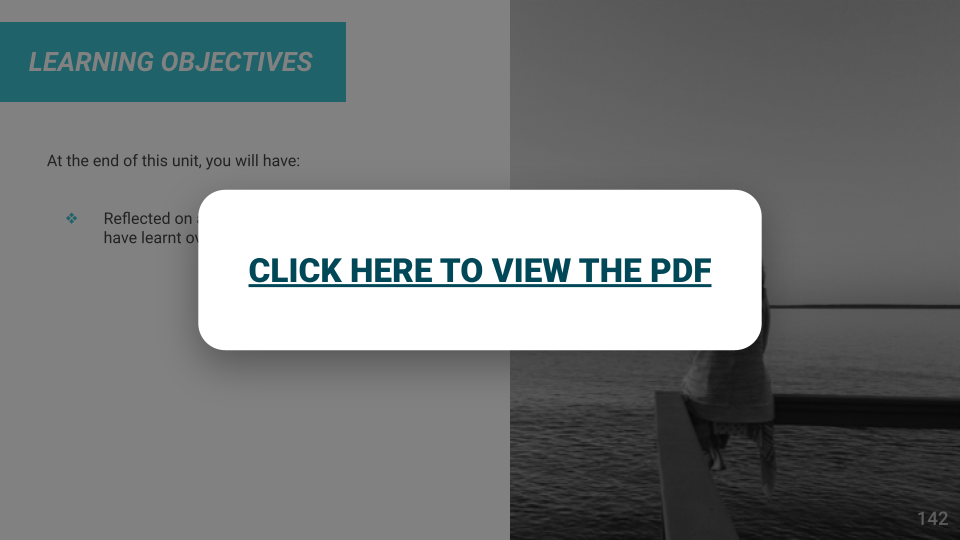Conflict Resolution Education - Basic
Let's Make Peace Happen
In this course, you will learn topics about:
- Understanding Human Rights
- What is Peace
- What is Conflict and its styles
- Communication and active listening
- Problem solving
- Negotiation
- Dialogue
- Problem solving and Negotiation
Please watch all videos and study the PDF slides. After each section, take a moment to consider your responses to take the quiz. At the end of the course, you will be asked to complete an Exam to assess your understanding.
Pre-unit: Introduction
This video gives us a brief introduction of the topics we shall learn at the basic level of our course, Conflict Resolution Education.
Unit 1: What is peace?
At the end of this unit, you will be able to:
- Reflect on your own definition of peace;
- Learn to identify the elements that make up the idea of peace and appreciate that it is a complex and multifaceted concept;
- Understand the difference between negative and positive peace;
- Understand the differences between peacemaking, peacekeeping and peacebuilding;
- Reflect on what peacebuilding involves;
- Reflect on the relevance and importance of peacebuilding at the individual, local, and global levels.
Once you have read the whole document, check your understanding of unit 1: Click here
Unit 2: What is conflict?
At the end of this unit, you will be able to:
- Reflect on your own definition of conflict;
- Understand what conflict is and the difference between destructive and constructive conflict;
- Learn to identify parties in conflict.
Once you have read the whole document, check your understanding of unit 2: Click here
Unit 3: Positions, interests and needs
At the end of this unit, you will be able to:
- Reflect on how and if, you meet your needs;
- Learn what needs and underlying needs are;
- Understand that all conflicts are caused by unmet needs;
- Learn to distinguish between positions, interests and needs to resolve conflict.
Once you have read the whole document, check your understanding of unit 3: Click here
Unit 4: Emotions
At the end of this unit, you will be able to:
- Understand that emotions play a role in conflict resolution;
- Learn that emotions are not good or bad – they are reactions in our bodies and minds that help us understand and process situations;
- Identify at least eight emotions, the bodily sensations they evoke, and situations where such feelings arise;
- Gain two skills for managing emotions: identifying/naming emotions and regulated breathing.
Once you have read the whole document, check your understanding of unit 4: Click here
Unit 5: Emotions
At the end of this unit, you will be able to:
- Understand what identity involves and how it influences one’s perceptions and points of view, which can create or impact conflict;
- Appreciate why it is important to be self-aware of one’s own identity characteristics, perceptions and biases, especially when involved in conflict;
- Understand that people sometimes create conflict based on perception that identities other than their own are bad or dangerous.
Once you have read the whole document, check your understanding of unit 5: Click here
Unit 6: Human rights
At the end of this unit, you will be able to:
- Understand what Human Rights are, and that they must be respected, even in conflicts;
- Learn what the Declaration of Human rights, its origins and its content;
- Learn how some organizations fight to protect human rights.
Once you have read the whole document, check your understanding of unit 6: Click here
Unit 7: Conflict approaches
At the end of this unit, you will be able to:
- Understand that there are many ways people approach conflict;
- Understand that we can be strategic about which of the approaches we use;
- Understand the value of identifying conflict styles of those with whom we are in conflict.
Once you have read the whole document, check your understanding of unit 7: Click here
Unit 8: Communication & active listening
At the end of this unit, you will be able to:
- Learn how communication can help people relate to each other, increase awareness about events and circumstances, and improve conflict analysis and resolution.
- Understand that communication occurs in different ways, including nonverbal communication, and both passive and active listening.
- Learn key communication tools in order to prevent, manage, and resolve conflicts.
Once you have read the whole document, check your understanding of unit 8: Click here
Unit 9: Problem solving
At the end of this unit, you will be able to:
- Learn tools for reframing hostile communication so that parties can move toward constructive problem-solving;
- Practice applying the “I-Statement” and “Saying on your side of the net” framework to solve problems;
- Understand that problem-solving is a creative process that involves brainstorming multiple potential solutions and then identifying the one that is most satisfactory to the parties.
Once you have read the whole document, check your understanding of unit 9: Click here
Unit 10: Negotiation
At the end of this unit, you will be able to:
- Learn what negotiation is and recognized ways that we negotiate all the time.
- Understand how to apply a useful negotiation framework.
- Draw upon concepts and skills from previous units to learn to negotiate agreements.
Once you have read the whole document, check your understanding of unit 10: Click here
Unit 11: Dialogue
At the end of this unit, you will be able to:
- Understand what dialogue is and how it can contribute to peacebuilding;
- Identify the roles in the dialogue process;
- Discover the rules, steps and set up considerations of a productive dialogue.
Once you have read the whole document, check your understanding of unit 11: Click here
Unit 12: Course overview and reflection
At the end of this unit, you will have reflected on and review everything you have learnt over the course.
You will also find a glossary of all the terms used in this course.
Watch this video to close this course.
